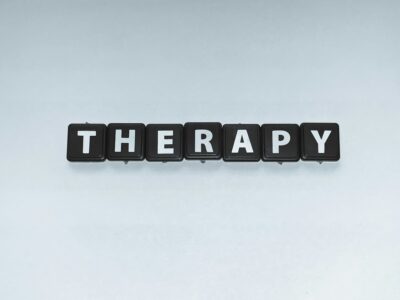Living with anxiety can feel overwhelming, but there’s hope for managing these challenging emotions through evidence-based therapeutic approaches. Anxiety coping skills with CBT (Cognitive Behavioral Therapy) offer practical, scientifically-proven strategies that help individuals identify, understand, and modify the thought patterns and behaviors that contribute to their anxiety. Unlike medication alone, CBT equips you with lasting tools that you can use throughout your life to better manage anxious thoughts and feelings.
Cognitive Behavioral Therapy has emerged as one of the most effective treatments for anxiety disorders, with decades of research supporting its efficacy. This therapeutic approach focuses on the interconnected relationship between thoughts, feelings, and behaviors, helping individuals recognize how negative thinking patterns can fuel anxiety and perpetuate distressing cycles. By learning specific coping techniques, people can develop greater control over their anxiety symptoms and improve their overall quality of life.
The beauty of CBT-based anxiety management lies in its practical nature. Rather than simply talking about problems, this approach provides concrete skills and strategies that can be applied in real-world situations. Whether you’re dealing with generalized anxiety, social anxiety, panic attacks, or specific phobias, the coping skills learned through CBT can be adapted to meet your unique needs and circumstances.
Understanding the CBT Approach to Anxiety
Cognitive Behavioral Therapy operates on the fundamental principle that our thoughts, emotions, and behaviors are interconnected and influence each other in powerful ways. When it comes to anxiety, this relationship becomes particularly evident. Anxious thoughts often trigger uncomfortable physical sensations and emotional responses, which in turn can lead to avoidance behaviors or other unhelpful coping strategies.
The CBT model helps individuals recognize these patterns by examining the cognitive distortions or thinking errors that commonly accompany anxiety. These might include catastrophic thinking, where we imagine the worst possible outcome, or all-or-nothing thinking, where situations are viewed in black and white terms. By identifying these distorted thought patterns, individuals can begin to challenge and modify them, leading to reduced anxiety symptoms.
One of the key strengths of anxiety coping skills with CBT is their focus on the present moment and practical problem-solving. Rather than dwelling extensively on past experiences or childhood origins of anxiety, CBT emphasizes learning skills that can be immediately applied to current situations. This approach makes it particularly effective for people who want to see tangible progress in managing their anxiety symptoms.
Core CBT Techniques for Managing Anxiety
Several fundamental techniques form the backbone of CBT-based anxiety management. These evidence-based strategies can be learned and practiced both in therapy sessions and independently, making them versatile tools for long-term anxiety management.
Cognitive Restructuring
Cognitive restructuring involves identifying and challenging negative or distorted thoughts that contribute to anxiety. This process begins with developing awareness of automatic thoughts – those immediate, often unconscious reactions we have to situations. Once these thoughts are identified, individuals learn to examine the evidence for and against these thoughts, consider alternative perspectives, and develop more balanced, realistic ways of thinking about anxiety-provoking situations.
Behavioral Experiments
Behavioral experiments are structured activities designed to test the accuracy of anxious predictions and gradually expose individuals to feared situations in a controlled, manageable way. These experiments help people gather real-world evidence about their fears while building confidence in their ability to cope with anxiety-provoking situations. Through repeated practice, individuals often discover that their worst fears are unlikely to materialize, or that they have more resilience and coping ability than they initially believed.
Core CBT Techniques for Managing Anxiety
Anxiety coping skills with CBT revolve around understanding the connection between thoughts, feelings, and behaviors. When you experience anxiety, your mind often jumps to worst-case scenarios or catastrophic thinking patterns. CBT helps you identify these patterns and develop healthier ways to respond to anxious thoughts and situations.
Cognitive Restructuring: Challenging Anxious Thoughts
One of the most fundamental anxiety coping skills with CBT is cognitive restructuring. This technique involves examining your anxious thoughts and questioning their validity. For example, if you think “I’m going to fail this presentation and everyone will think I’m incompetent,” you would challenge this by asking yourself: What evidence do I have for this thought? What would I tell a friend in this situation? What’s the most realistic outcome?
Through this process, you might reframe the thought to: “I’ve prepared well for this presentation, and even if it doesn’t go perfectly, most people won’t judge me harshly.” This shift from catastrophic thinking to balanced thinking is a cornerstone of effective anxiety management.
Behavioral Experiments and Exposure Techniques
CBT also emphasizes behavioral changes to reduce anxiety symptoms. Gradual exposure to feared situations helps you build confidence and realize that your anxious predictions rarely come true. If you have social anxiety, for instance, you might start by making small talk with a cashier, then progress to attending a small gathering, and eventually work up to larger social events.
These behavioral experiments serve as real-world tests of your anxious thoughts. When you discover that the feared consequences don’t materialize, your anxiety naturally decreases, and you develop more effective coping mechanisms.
Mindfulness and Grounding Techniques
Modern CBT incorporates mindfulness practices that help you stay present when anxiety strikes. The 5-4-3-2-1 grounding technique is particularly effective: identify 5 things you can see, 4 things you can touch, 3 things you can hear, 2 things you can smell, and 1 thing you can taste. This exercise anchors you in the present moment and interrupts the anxiety spiral.
Progressive muscle relaxation is another valuable tool where you systematically tense and release different muscle groups. This practice helps you recognize physical tension and develop the ability to consciously relax your body when anxiety levels rise.
Developing Your Personal Anxiety Toolkit
Building effective anxiety coping skills with CBT requires consistent practice and personalization. What works for one person may not work for another, so it’s important to experiment with different techniques and create your own toolkit of strategies. Keep a anxiety journal to track your triggers, thoughts, and which coping strategies prove most helpful in different situations.
Technology can also support your CBT journey. If you’re looking for additional guidance and practice with these techniques, you might find it helpful to Try Aitherapy now. Many people find that having structured support and interactive exercises enhances their ability to apply CBT principles effectively.
Remember that developing strong coping skills takes time and patience. Start with one or two techniques that resonate with you, practice them regularly, and gradually expand your toolkit as you become more comfortable with the process.
Creating Lasting Change Through CBT Practice
The journey of mastering anxiety coping skills with CBT is not a destination but an ongoing process of growth and self-discovery. As you implement these techniques into your daily routine, you’ll likely notice that anxiety becomes less overwhelming and more manageable. The key is consistency and patience with yourself as you develop these new mental habits.
Success with CBT techniques often comes from understanding that setbacks are normal parts of the healing process. There will be days when anxiety feels more intense or when your usual coping strategies don’t seem as effective. During these moments, remember that building resilience takes time, and each challenging experience provides an opportunity to strengthen your anxiety management skills.
When to Seek Additional Support
While self-directed practice of anxiety coping skills with CBT can be highly effective, some individuals may benefit from professional guidance. If your anxiety significantly interferes with daily activities, relationships, or work performance, consider consulting with a mental health professional who specializes in CBT approaches.
Many people also find that combining self-help techniques with structured digital resources enhances their progress. Interactive platforms can provide guided exercises, progress tracking, and personalized feedback that complement your independent practice. If you’re interested in exploring additional support for your CBT journey, you might want to Try Aitherapy now. Such resources can offer valuable reinforcement of the concepts you’re learning and practicing.
Final Thoughts: Your Path to Anxiety Management
Developing effective anxiety coping skills with CBT empowers you to take control of your mental health and build lasting resilience against future challenges. The techniques discussed—cognitive restructuring, behavioral experiments, mindfulness practices, and personalized toolkit development—form a comprehensive approach to anxiety management that you can adapt to your unique needs and circumstances.
Remember that progress isn’t always linear, and small improvements deserve celebration. Each time you challenge an anxious thought, engage in a behavioral experiment, or use grounding techniques successfully, you’re rewiring your brain’s response to anxiety-provoking situations. This neuroplasticity means that with continued practice, these healthier patterns become increasingly automatic.
Start implementing one technique today, whether it’s questioning a worrying thought or practicing the 5-4-3-2-1 grounding exercise. Your future self will thank you for taking this important step toward better mental health and emotional well-being.
References
American Psychological Association. (2022). Cognitive behavioral therapy (CBT). Retrieved from https://www.apa.org/ptsd-guideline/patients-and-families/cognitive-behavioral
Anxiety and Depression Association of America. (2023). Cognitive behavioral therapy (CBT). Retrieved from https://adaa.org/understanding-anxiety/treatment/therapy
National Institute of Mental Health. (2023). Psychotherapies. Retrieved from https://www.nimh.nih.gov/health/topics/psychotherapies



